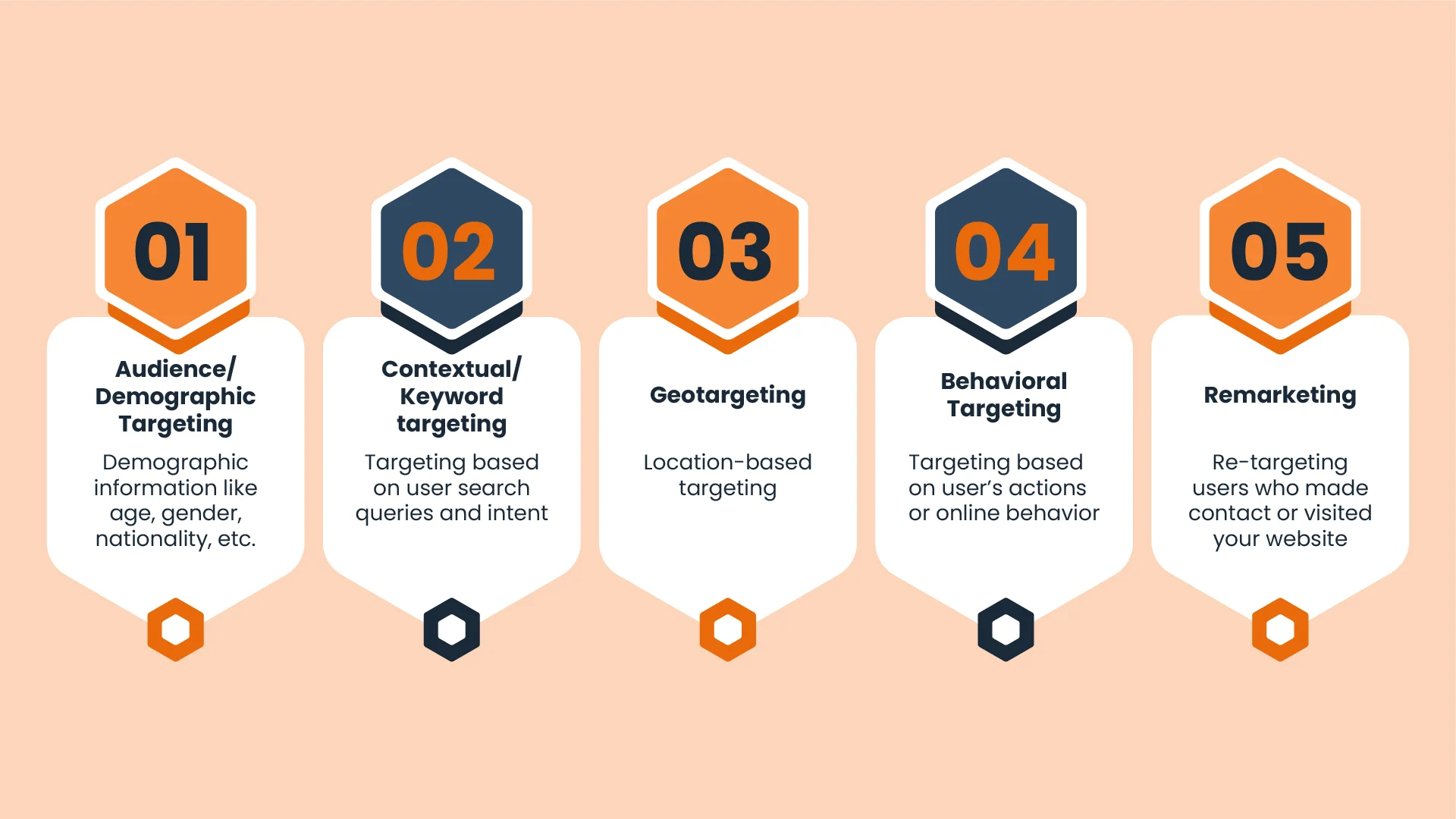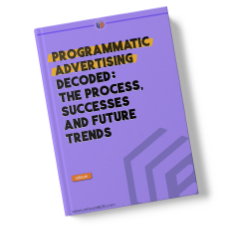Running paid marketing campaigns isn’t about picking up prime-time slots on TV anymore. That used to be the best way to burn your wallet and attract customers who didn’t know what they were getting into. With programmatic advertising coming into the picture, you can reach your ideal buyers by answering simple questions about them. And these answers tell you what programmatic ad targeting types to go for.
But, how do you identify these questions, let alone the answers to them?
Understanding How to Ask the Right Questions to Find the Right Ad Targeting Type
To meet the prerequisites of finding the right ad targeting type, you need to know 4 important things about your business.
1. The Product
What does your product/service do? The main thing you need to be sure of, is what your product is all about. You need to understand what your product does, how well it does it, and how unique it is.
A simple exercise that all businesses follow is conducting a SWOT analysis of your product and business model. A SWOT analysis will give you the strengths, weaknesses, opportunities, and threats for your product.
2. The Customers
Who benefits from your product/service? To target your customers accurately, you need to know who they are. This understanding of your customers, has to go deeper than your regular ol’ demographics research.
Creating a detailed buyer persona is the ideal way to start. You need to find out basic details like demographics and firmographics. Then, you can start narrowing down to their problems, solutions, and wants.
3. The Industry
What industry standards dictate the market? Your product isn’t the only one in the market, unless you’re building a working time machine. So, you must be ahead of the competition and learn about your industry standard practices.
Learning about industry standards is all about identifying the strongest competitors, the latest and best that the market has to offer, and how the target buyers behave with certain marketing tactics.
4. The Purpose
What’s your end goal with programmatic ads? You may have different goals for different programmatic ad campaigns. The targeting types largely affect the end results of the actions you want your target audience to take.
Some of the common purposes behind programmatic ads include generating sales, building brand recognition, remarketing, etc.
Once you understand these 4 areas of your business, you can start identifying the media buying methods and pinpoint the target types easily.
5 Targeting Types for Programmatic Advertising

1. Audience/Demographic Targeting
A quick distinction between most B2B and B2C products is in the specificity. B2B products deliver highly specific solutions that apply to specific businesses. B2C products, on the other hand, cater to a larger audience with a generalized solution that helps a large segment of the audience.
For those B2C products, the audience/demographic targeting method of programmatic advertising works wonders. You specify your audience segment by identifying demographic details about them. To be specific, you need to find out their:
- Gender
- Age
- Location
- Income group
- Occupation
- Parental status
- Interests
Some of these vary depending on your product, and you may even need to add a new factor. Based on this demographic information, you can perform audience targeting.
2. Contextual/Keyword targeting
Keywords are the center of marketing for us professionals working in the industry. In the truest essence of marketing, the ideal focal point should be the target audience. But, we don’t always get to interact with them or find data that lets us into their heads. Thankfully, keywords tell us almost everything we need to know about the target audience’s intent.
Keywords can be of different types like commercial, informational, navigational, and transactional. They’re often action-oriented and tell you exactly what the audience wants to do. With this context, you can direct that audience to a satisfactory destination that solves their search intent, while also helping you decide the path for your prospects.
If you choose to go with keyword targeting, your ads can reach buyers with higher conversion chances. Since your ads cater to their needs instead of just relying on an assumption, they will have a stronger reason to click.
3. Geotargeting
Localization is a huge part of SEO and Advertising. The most common search queries focus on local searches like “Postal services near me”. The biggest advantage of geotargeting is getting in front of your local audience. If you’re closer to your customers, it eliminates a lot of barriers to purchase like distance, and time it takes.
To serve ads based on geotargeting, you need to add filters using zip codes or general areas. You can also combine geotargeting and keyword targeting using navigational keywords that are location-specific.
4. Behavioral Targeting
Have you seen ads about those gym mats that you casually searched on Google? That is a result of behavioral targeting. Most websites store cookie data that is then used by advertising platforms like Google Ads. Behavioral targeting simply means analyzing user’s actions and identifying suitable products that might interest them. This also includes user actions like repeated searches about a specific niche or product category.
Behavioral targeting is a unique, but greatly effective method to reach your potential buyers. Rather than just going for demographic targeting, using behavioral targeting lets you reach an audience that has a greater interest in your product.
Many beginners often confuse behavioral targeting with the next type.
5. Remarketing
Remarketing is similar to behavioral targeting, but not exactly the same thing. It is another action-oriented targeting method for programmatic advertising. But, unlike behavioral targeting, remarketing only focuses on users who have already visited your website or interacted with your digital presence.
The purpose of using remarketing is to keep targeting the same user to nudge them towards conversion. It also helps you reach out to old users who have either stopped visiting your website or using your product.
Programmatic Ad Targeting Types are More of a Direction
Having a programmatic ad targeting type is great for ensuring that your ad spend serves its potential. If you know how to target the exact people you need to, you won’t spend extra on those who won’t take any action.
However, these targeting types are more of a direction than an exclusive set of rules. There is a good chance that you will find a mix of these methods to be your ideal type. It all depends on the factors we discussed earlier.
Programmatic advertising can intimidate anyone who’s new to marketing. If you want to learn what it is in simple language without dumbing it down, check out our blog: Beginner’s Guide to Programmatic Advertising.
If you want to learn about real-time case studies and future trends in programmatic advertising, do not forget to check out UnboundB2B’s programmatic advertising ebook for free.

Our blog
Latest blog posts
Tool and strategies modern teams need to help their companies grow.

This comprehensive guide covers everything about service marketing—its unique chara...

Believe it or not, the concept of content sharing existed long before the Internet. I...

Sales analysis is essential to avoid inaccurate forecasts and identify improvement op...




